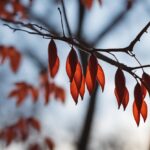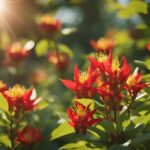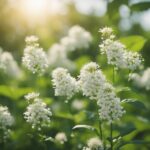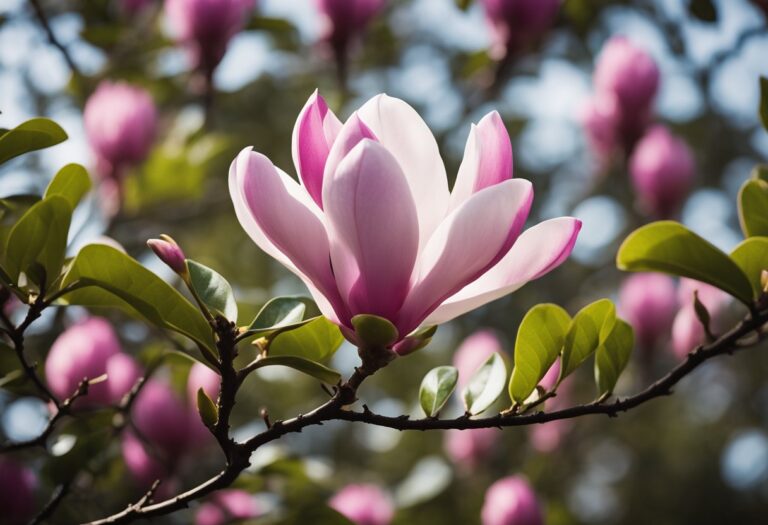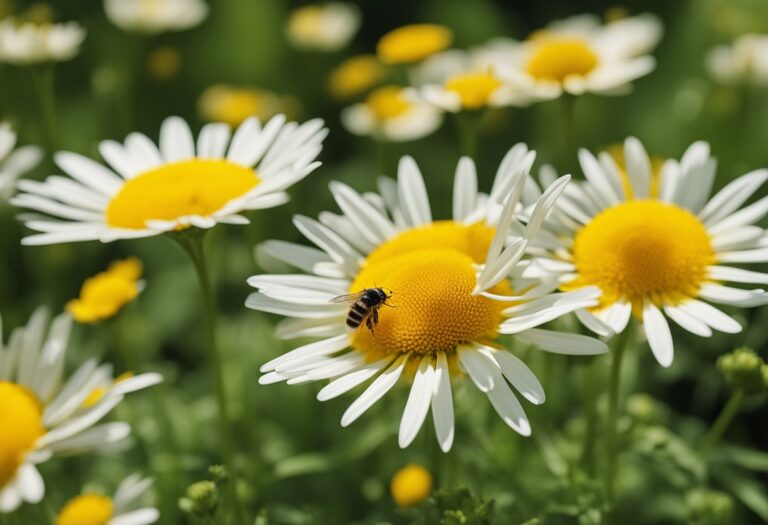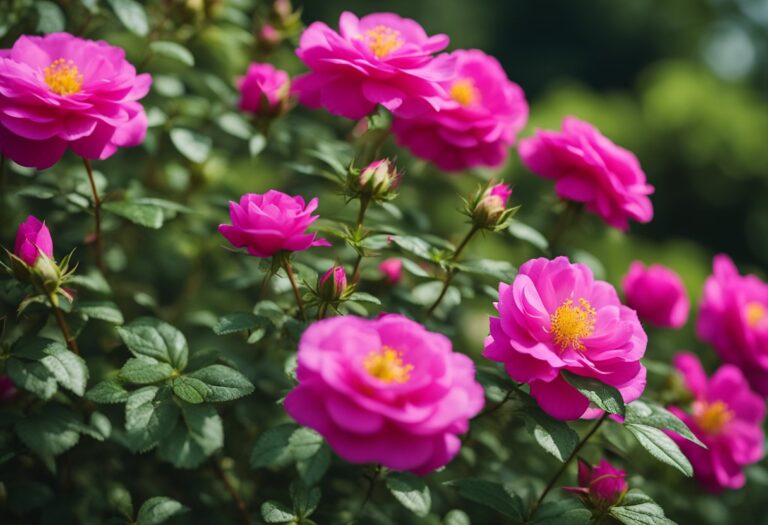Red Maple Seed Pods Overview
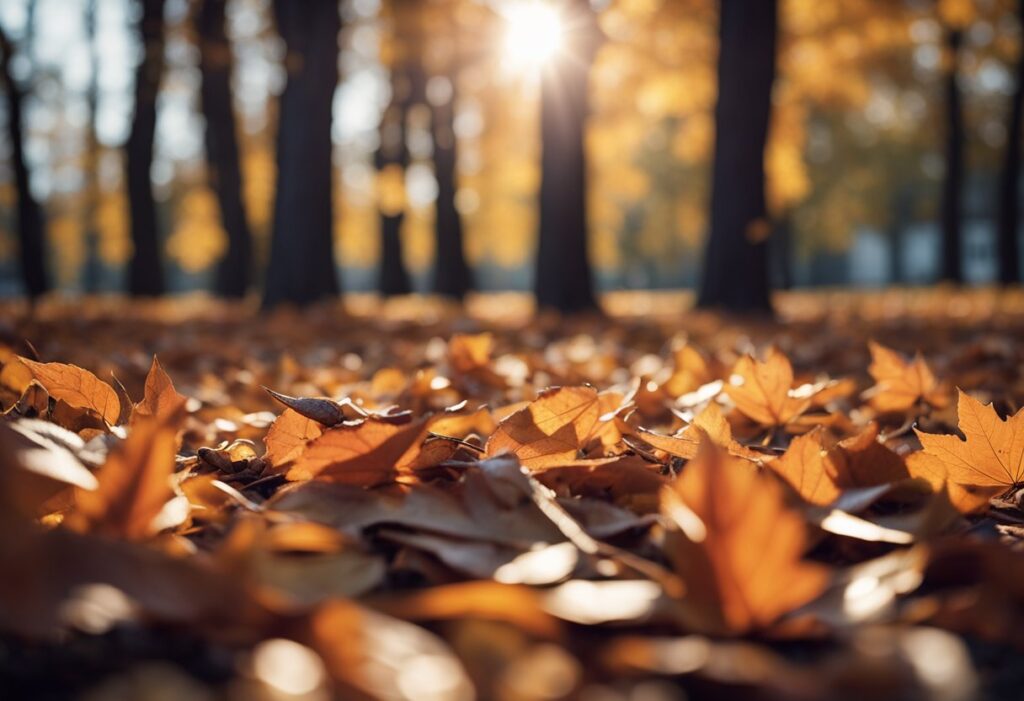
Red maple trees (Acer rubrum) are known for their vibrant foliage and adaptive nature.
Observing these trees in different seasons will reveal their unique seed pods, commonly referred to as samaras or colloquially as “helicopters.” These samaras play a crucial role in the propagation of red maples.
Characteristics of Samaras
- Appearance: You’ll identify them as small, winged seeds that cluster around branches.
- Color: They commence with red and green hues, transitioning to a tan as they mature.
- Shape: They are propeller-shaped, which facilitates their distribution by wind.
Samaras are typically ready for collection in late spring to early summer. By adopting the right strategies, you can harvest and plant these seeds effectively.
Seed Collection and Planting
When you plan to collect the samaras:
- Timing: Aim for late May to mid-June, which is generally peak seed collection season.
- Signs of Maturity: Look for fully matured seeds that have yet to disperse from the tree.
After collection, soak the seeds in warm water for 24 hours to soften their outer coating. This step encourages successful germination. Once soaked, the seeds should be sown in moist, fertile soil and covered lightly.
Morphology of Seed Pods
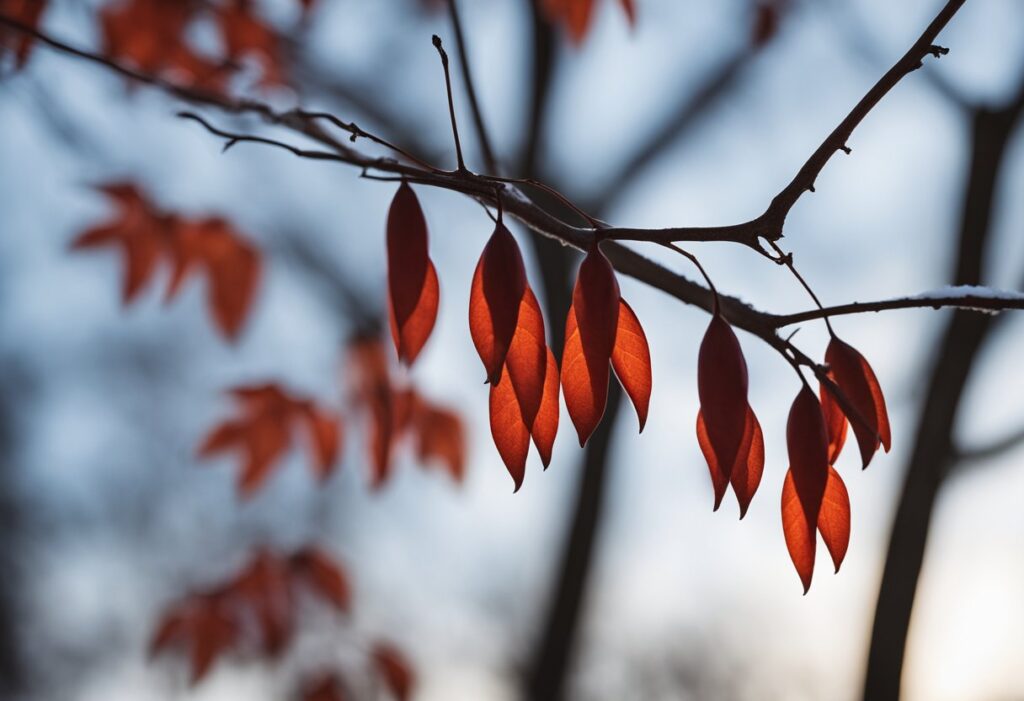
Red Maple seed pods, scientifically known as samaras, are distinct in shape and coloring. They play a crucial role in the tree’s reproductive cycle and are hallmarks of the species.
Shape and Structure
Your Red Maple seed pod is winged, known as a samara, and exhibits helicopter-like action when falling, a characteristic that aids in wind dispersal.
Typically, these pods grow to lengths of about 1.18″ to 2″ (3 – 5 cm). When released from the tree, they twirl and can travel some distance, which ensures that the seeds do not simply fall and grow beneath the parent tree but have a chance to colonize new territory.
Color and Texture
Red maple seed pods usually begin with a green coloration and then mature to a reddish hue.
Observing their texture will reveal a smooth exterior with a slight ridge. The seed pods eventually dry out and may take on a tan or brown color as they reach full maturity and are ready to disperse the seeds within.
Reproduction Cycle
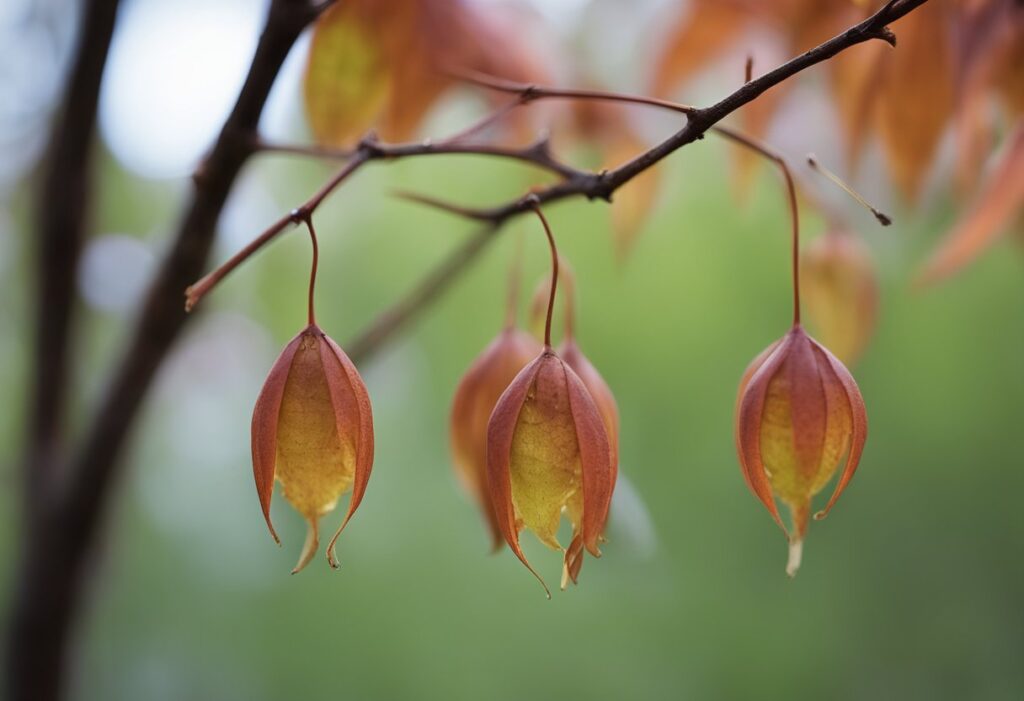
The reproductive cycle of Red Maple trees involves distinct stages: pollination to initiate seed formation, seed maturation, and finally, seed dispersal to propagate the species.
Pollination Process
Your Red Maple tree (Acer rubrum) enters its pollination phase in spring. Male and female flowers may occur on separate trees (dioecious) or on the same tree (monoecious).
Wind acts as the primary pollinator, carrying pollen from the male to the female flowers, resulting in fertilization.
Seed Maturation
Post-pollination, the fertilized flowers develop into samaras, commonly known as ‘helicopters’ due to their distinctive shape. These samaras facilitate wind dispersal and house the seeds, which undergo maturation—usually from late spring to early summer.
You can spot maturation’s completion when the samaras dry and turn brown.
Seed Dispersal
Once mature, Red Maple seeds are ready for dispersal. Typically, dispersal occurs from late spring through early summer, when the seeds, aided by their wing-like samaras, flutter to the ground. Optimal dispersal allows them to spread sufficiently far from the parent tree to reduce resource competition.
Ecological Role
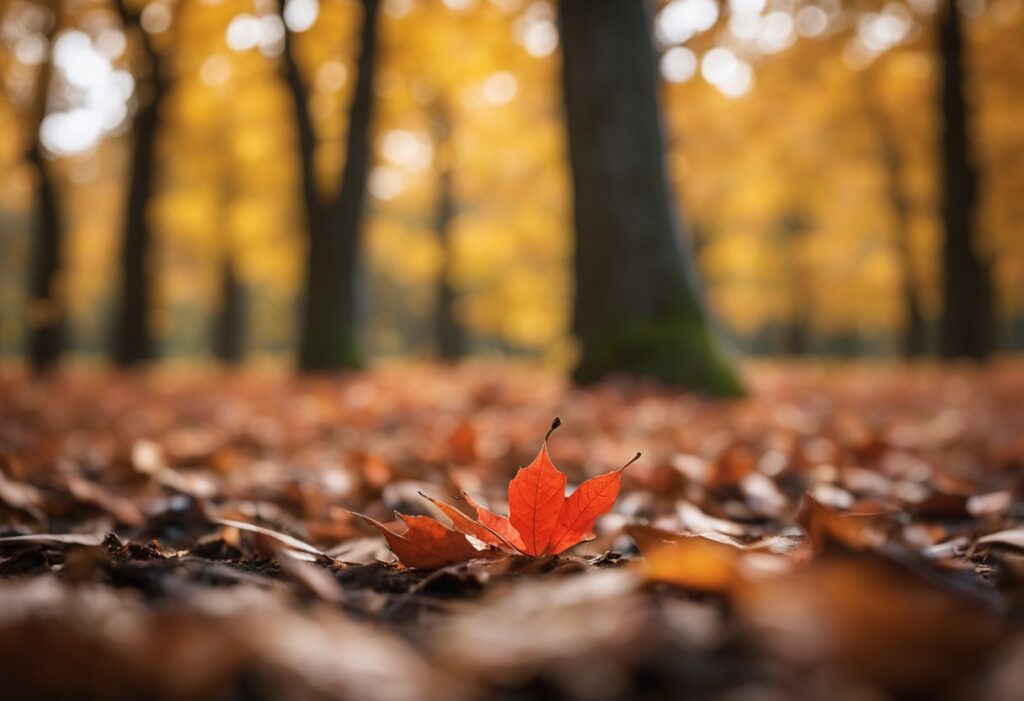
In the broader ecosystem, red maple seed pods play a significant role in various ecological processes, particularly in their importance as habitat and in their interactions with wildlife.
Habitat Importance
Your observation of red maple trees, adaptable to a range of habitats from lowlands to elevations of about 900 meters, reveals their importance in forest dynamics. They are pioneering reforestation efforts, often thriving in disturbed areas, stabilizing the soil, and paving the way for other species to follow.
Wildlife Interactions
Birds and Rodents: When they burst, red maple seed pods scatter seeds that feed various birds and rodents.
- Insects: Pollinators are particularly attracted to red maple trees during their early blooming period and play a role in the tree’s reproductive cycle.
- Deer: Additionally, the foliage, particularly in younger trees, provides a food source for deer.
Human Uses
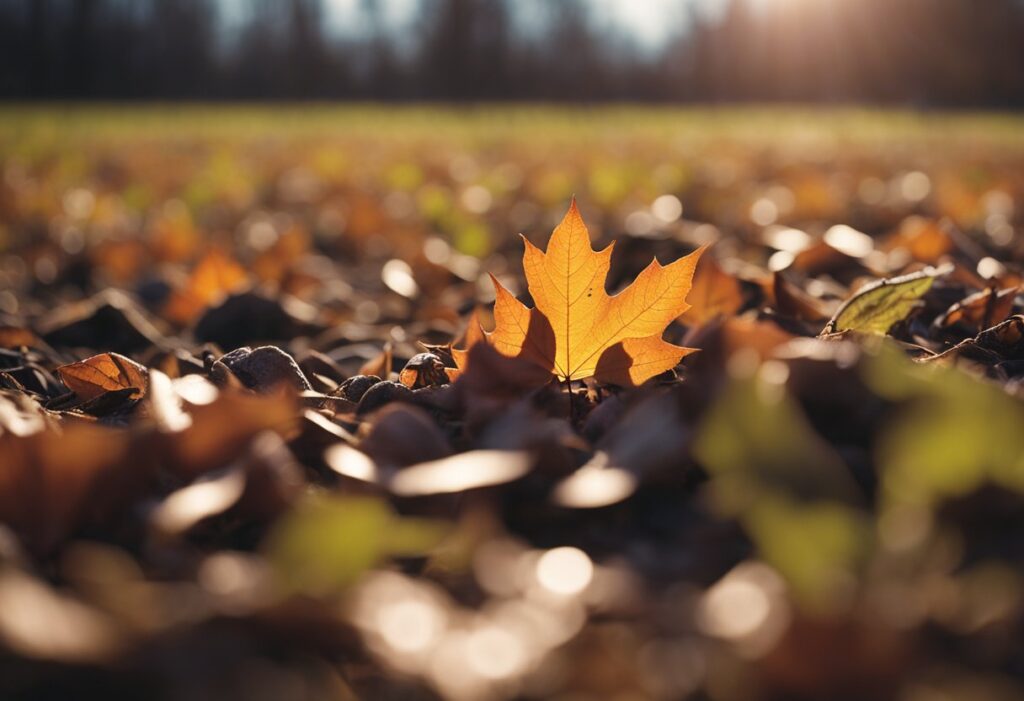
Red Maple seed pods, commonly known as samaras, have practical applications beyond their natural role in tree reproduction.
Ornamental Landscaping
Red Maple trees, with their vibrant foliage and distinctive seed pods, are a popular choice for ornamental landscaping. You can incorporate these trees into your garden design for their visual appeal throughout the seasons, especially in the fall when their leaves turn a stunning red. The seed pods add a decorative element as they helicopter down from the canopy.
Traditional Medicine
Red Maple seed pods have been acknowledged in traditional medicine practices for their therapeutic properties. While the scientific community continues to study these uses, anecdotal evidence suggests that infusions or teas from these seed pods may have been historically used for their potential health benefits. However, always consult with a healthcare professional before using any plant product for medicinal purposes.
Frequently Asked Questions
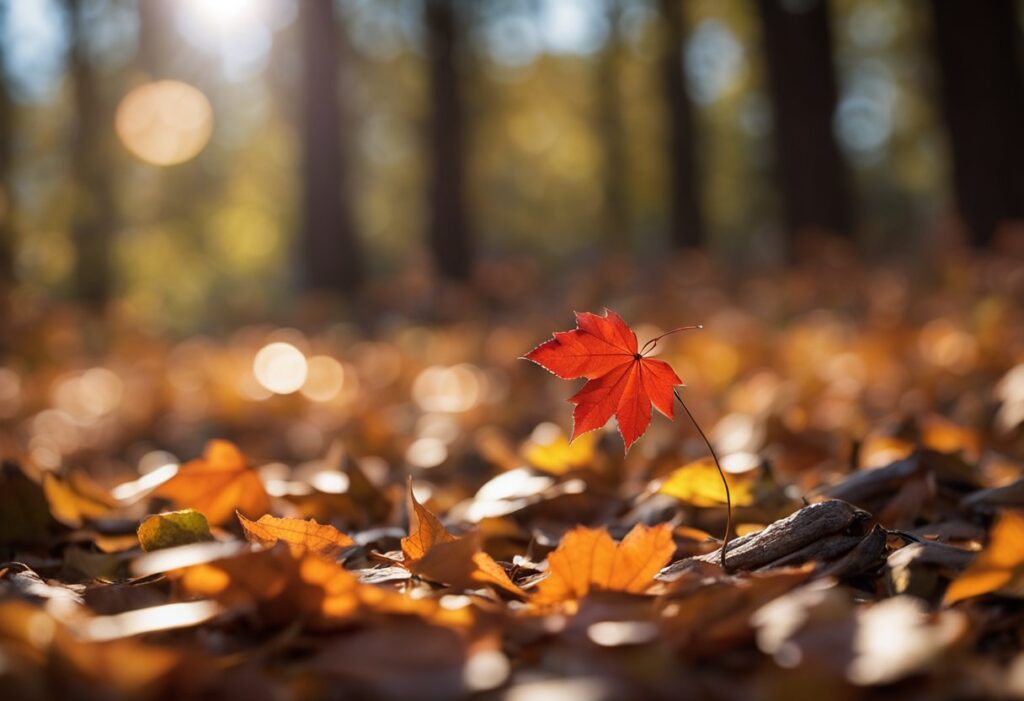
Red maple tree seed pods are a distinctive feature of these trees, and they prompt many questions regarding identification, growth, and usage. Below are answers to some common inquiries.
How can one identify red maple tree seed pods?
Red maple tree seed pods are recognized by their shape and colour. Typically, they appear as paired, winged samaras. Early in development, they’re red and green, transitioning to a tan colour as they mature.
What is the process for growing a red maple tree from seed?
To grow a red maple from seed, collect the mature samaras and plant them after a period of cold stratification, which simulates winter conditions. Once stratified, you should sow the seeds in fertile soil and ensure they receive adequate moisture and light.
Are maple tree seeds, including those from red maples, released annually?
Yes, red maple trees release seeds annually. They typically disseminate seeds in spring or early summer after flowering in late winter to early spring.
What methods are effective for managing the dispersal of maple tree helicopters?
To manage dispersal, you can collect the samaras before they fall or use netting to capture them. Regular raking or leaf blowing can also help gather the seeds once they’ve fallen.
Can red maple seeds be safely consumed by humans?
Humans do not commonly consume red maple seeds, and there is limited information on their edibility. It’s advised to consult with a knowledgeable source before considering consumption.
What are the potential benefits of using maple seeds?
Maple seeds can be used to propagate new trees. These trees contribute to biodiversity, provide shade, and offer aesthetic value to landscapes. Although they may have other uses in certain cultures, they are primarily valued for their role in tree reproduction.


